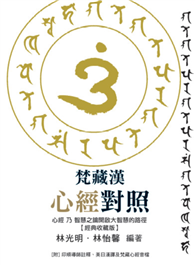By way of a personal note, I can reveal to the reader that I was led to Sanskrit by an exposure to Indian philosophy while still a child. These early mystical interests gave way in the university to scholarly pursuits and, through reading the works of Franklin Edgerton, Louis Renou and Etienne Lamotte, I was introduced to the scientific study of the- past, to philology and the academic study of an ancient literature. In this period I wrote a number of books on Sanskrit aesthetics, concentrating on the sophisticated Indian notions of suggestion. This work has culminated in a three-volume study of the Dhvanyaloka and the Dhvanyalokalocana, for the Harvard Oriental Series. Eventually I found that I wanted to broaden my concern with India, to learn what was at the universal core of my studies and what could be of interest to everyone. In reading Indian literature, I came across so many bizarre tales and ideas that seemed incomprehensible and removed from the concerns of everyday life that I became troubled. Vedantic ideas of the world as a dream, for example, to which I had been particularly partial, seemed grandiose and megalomanic. I turned away with increasing scepticism from what I felt to be the hysterical outpourings of mystical and religious fanaticism.
| FindBook |
有 1 項符合
The Oceanic Feeling: The Origins of Religious Sentiment in Ancient India的圖書 |
 |
The Oceanic Feeling: The Origins of Religious Sentiment in Ancient India 作者:Masson 出版社:Springer 出版日期:1980-06-30 語言:英文 規格:精裝 / 213頁 / 24.43 x 16.21 x 1.96 cm / 普通級/ 初版 |
| 圖書館借閱 |
| 國家圖書館 | 全國圖書書目資訊網 | 國立公共資訊圖書館 | 電子書服務平台 | MetaCat 跨館整合查詢 |
| 臺北市立圖書館 | 新北市立圖書館 | 基隆市公共圖書館 | 桃園市立圖書館 | 新竹縣公共圖書館 |
| 苗栗縣立圖書館 | 臺中市立圖書館 | 彰化縣公共圖書館 | 南投縣文化局 | 雲林縣公共圖書館 |
| 嘉義縣圖書館 | 臺南市立圖書館 | 高雄市立圖書館 | 屏東縣公共圖書館 | 宜蘭縣公共圖書館 |
| 花蓮縣文化局 | 臺東縣文化處 |
|
|
圖書介紹 - 資料來源:博客來 評分:
圖書名稱:The Oceanic Feeling: The Origins of Religious Sentiment in Ancient India
|










